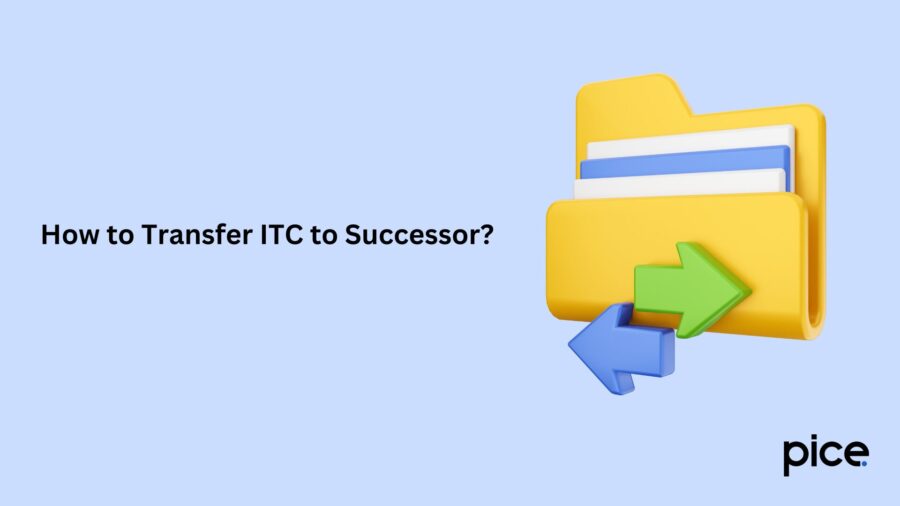Death of Proprietor in GST
- 19 Dec 24
- 10 mins

Death of Proprietor in GST
- Options Available in the Event of Death of a Sole Proprietor
- Documents Required as Proof By the Legal Heir Under GST
- Steps for Cancellation of GST Registration in Case of Death of a Sole Proprietor
- Steps for Transfer of Business in the Case Of Death of a Sole Proprietor
- Transfer of Input Tax Credit and Tax Liability
- How to Transfer ITC to Successor?
- Conclusion
Key Takeaways
- Cancel or transfer GST registration after the death of a sole proprietor to comply with legal requirements.
- Key documents include a death certificate, succession certificate, and NOC for GST cancellation or transfer.
- File Form GST REG-16 and GSTR-10 to cancel registration and settle outstanding taxes.
- Obtain fresh GST registration and transfer ITC using Forms GST REG-01 and GST ITC-02.
- Legal heirs must clear liabilities and update all records under the new GSTIN.
In the event of a sole proprietor's death, their business registration under GST can either be discontinued or transferred to a legal heir or a new owner. However, when the second option is chosen, it involves obtaining necessary legal documents, transferring all business assets and liabilities, and finally applying for the transfer of input tax credit.
All the actions mentioned above are non-negotiable, as the new business owner must register themselves under GST afresh and cannot continue commercial activities under the deceased person's name.
This guide will detail what happens after the death of a proprietor in GST and guide you on how to legally transfer a business, including a list of required documents.
Options Available in the Event of Death of a Sole Proprietor

When a proprietor who previously ran a GST-registered business suddenly passes away, their representatives have two options:
Cancelling the GST Registration
In case of the death of the sole proprietor, their legal heirs have the right to apply for the GST cancellation. To execute this step, they must fill out Form GST REG-16 and submit it to the relevant authorities.
Transfer of Business Ownership
Alternatively, any representative or legal heir can even opt for transferring the GST registration. To initiate this process, they must file the relevant application form with the office of the concerned Jurisdictional Officer. Thereafter, certain steps need to be followed for a fresh GST registration.
Documents Required as Proof By the Legal Heir Under GST
These are the documents expected by the GST Council for cancelling a sole proprietor’s GST membership:
- Identity proof documents (like Aadhaar, PAN card, and passport) showing the names of both the legal heir and the deceased person
- Succession certificate
- Death certificate of the company owner
- No Objection Certificate (NOC)—it is a compulsory document, especially when multiple legal heirs exist. The certificate should declare that there are no objections to the authorized signatory applying for the deceased person's GST cancellation.
Steps for Cancellation of GST Registration in Case of Death of a Sole Proprietor
Below you can find the step-by-step guide on how one can cease business registration in the case of the death of proprietor in GST:
Step 1: Visit the Office of the Proper Jurisdiction Officer
To start with, you must apply for a 'Change of Authorised Signatory' to claim a cancellation of the GST registration. While processing this, you have to furnish the pending GST returns. It is important to note that only legal heirs and certain representatives can follow this procedure with valid supporting documents.
Step 2: Pay the Due Taxes Until the Date on Which the Proprietor Died
You have to settle tax payments that include GST equivalent to the ITC mentioned for inputs procured for stock/ finished/ semi-finished or capital assets and goods till the day preceding GST cancellation or the total payable output tax, whichever amounts more.
Step 3: File Form GST REG-16
To initiate a valid GST cancellation, you have to obtain a GST REG-16 form. Through this, you declare information like the reason for license cancellation, particulars on taxes paid, and the date on which you are requesting a change in business ownership.
Step 4: Wait for Verification From the GST Officer
If the GST proper officer finds your application to be genuine, then they will pass the cancellation request to Form GST REG-19. Now, the GST cancellation will be effective from the initial date of your request.
Step 5: File Form GSTR-10
It is the final return which you should claim within 3 months of GST nullification or the order date for GST cancellation, whichever comes later. At this stage, the ITC on your business’ electronic credit ledger will soon disappear.
Thus, these are the straightforward steps through which you can cancel a GST registration. Note that if you fail to file the final return on time, the Council will send you a notice. It will be accompanied by an assessment order, popularly termed 'Form GST ASMT-13'. This determines your business' overall outstanding tax according to Section 29(5).
Steps for Transfer of Business in the Case Of Death of a Sole Proprietor

Section 29 of the CGST Act allows one to opt for transferring the business ownership after they have cancelled its GST registration upon the death of the sole proprietor.
Here are the steps to undertake a business as a new owner or legal heir under the GST rules:
Step 1: Obtain a Succession Certificate or Legal Heirship Document
Getting a succession certificate issued by the relevant body is truly essential to establishing your claim on both the assets and liabilities of the previous owner. Apart from the heirship certificate, you must arrange for proper supporting documents to transfer the available resources.
Step 2: Apply for a ‘Change of Authorised Signatory’
It is a compulsory step during which you also have to meet the outstanding tax burden. To complete this procedure, you need to be a legal heir and must visit the proper jurisdiction officer’s branch.
Step 3: Ask for Form GST REG-01
The Form GST REG-01 is necessary for a fresh GST registration. During this step, you must provide PAN card details of your own and not that of the deceased sole proprietor.
Step 4: Apply for the Transfer of Input Tax Credit
To opt for ITC transfer, you have to file Form GST ITC-02. One can easily get this document by visiting the GST common portal. Eventually, to validate the transfer, you have to confirm the status by using your new registration ID.
Step 5: Proceed to Cancel the Previous Registration
For this, you have to use Form GST REG-16. However, the transfer option won’t be enabled as long as the outstanding tax liabilities are not cleared.
Step 6: Wait for Approval
A GST Officer approves your application and passes the cancellation order valid from the date on which you originally requested for registration cancellation.
Step 7: File the Final GST Return for Business Transfer
Within 3 months following the registration cancellation event, you have to submit Form GSTR-10. It is the formal document a successor should access to complete the whole transfer process.
Step 8: Update All the Relevant Documents
Under this, you have to meet the pending invoices, letterheads, and several other vital documents within the new GSTIN.
Transfer of Input Tax Credit and Tax Liability
The transfer of ITC is possible under Section 18(3) of the CGST Act whenever business ownership is switched. However, for this to be effective, the business' liabilities also need to be transferred as directed through Rule 41.
Moreover, Section 93(1) mentions that if a taxable person is due to settle GST, the successor must pay on behalf of the deceased proprietor.
Therefore, if you are someone who wishes to carry forward a sole proprietor’s business, you have to obtain credit of input tax. Specifics of this data are stated in the previous business owner’s electronic credit ledger. Finally, you will be responsible for settling all outstanding GST on the proprietor's behalf.
How to Transfer ITC to Successor?

The transfer of input tax credit must follow the guidelines as per Rule 41 of the CGST Act, 2017. According to it, the legal heir or successor should produce the sole proprietor’s death certificate and a succession certificate as documentary evidence to the jurisdictional officer. Next, the authorised person replaces the deceased business owner with the applicant as the authorised signatory.
In the case of a minor successor, their legal guardian assumes the place of the authorised signatory. After the registration discontinuation following the death of a proprietor in GST, the successor must apply for a fresh registration to generate a unique GSTIN in their name.
The official GST portal then assigns temporary credentials like password and username. You get these details via the e-mail address you mentioned while applying. Carefully enter the relevant details in the blank fields after clicking on the first-time login link. After following this step, you must immediately change your username and password as per the stated rules.
Next, file Form GST ITC-02 using the registration particulars of the deceased sole proprietor. It is a mandatory step that you have to execute after filling in a few additional details.
The legal heir/successor must accept the transfer of ITC using his new GSTIN. After the transfer takes place, he/she can successfully proceed to cancel the previous registration of the deceased owner.
Conclusion
It is vital to cease the business registration after the death of a proprietor in GST. Failing to do so can attract undesired government-instructed penalties and sanctions. When you attempt to complete the procedure all by yourself, you may face a few challenges.
To tackle this, consider following the step-by-step instructions mentioned above. In case you need professional assistance, do not hesitate to reach out to seasoned GST experts.
💡If you want to streamline your payment and make GST payments, consider using the PICE App. Explore the PICE App today and take your business to new heights.
 By
By 

















